Living room goals: Global Editor-in-Chief Lucy Searle shares 10 ways to put your sofa in the spotlight
Styling your sofa beautifully so that it is the centrepiece of your living room is more involved than just arranging a few cushions. This is how I do it, with the help of sofa.com
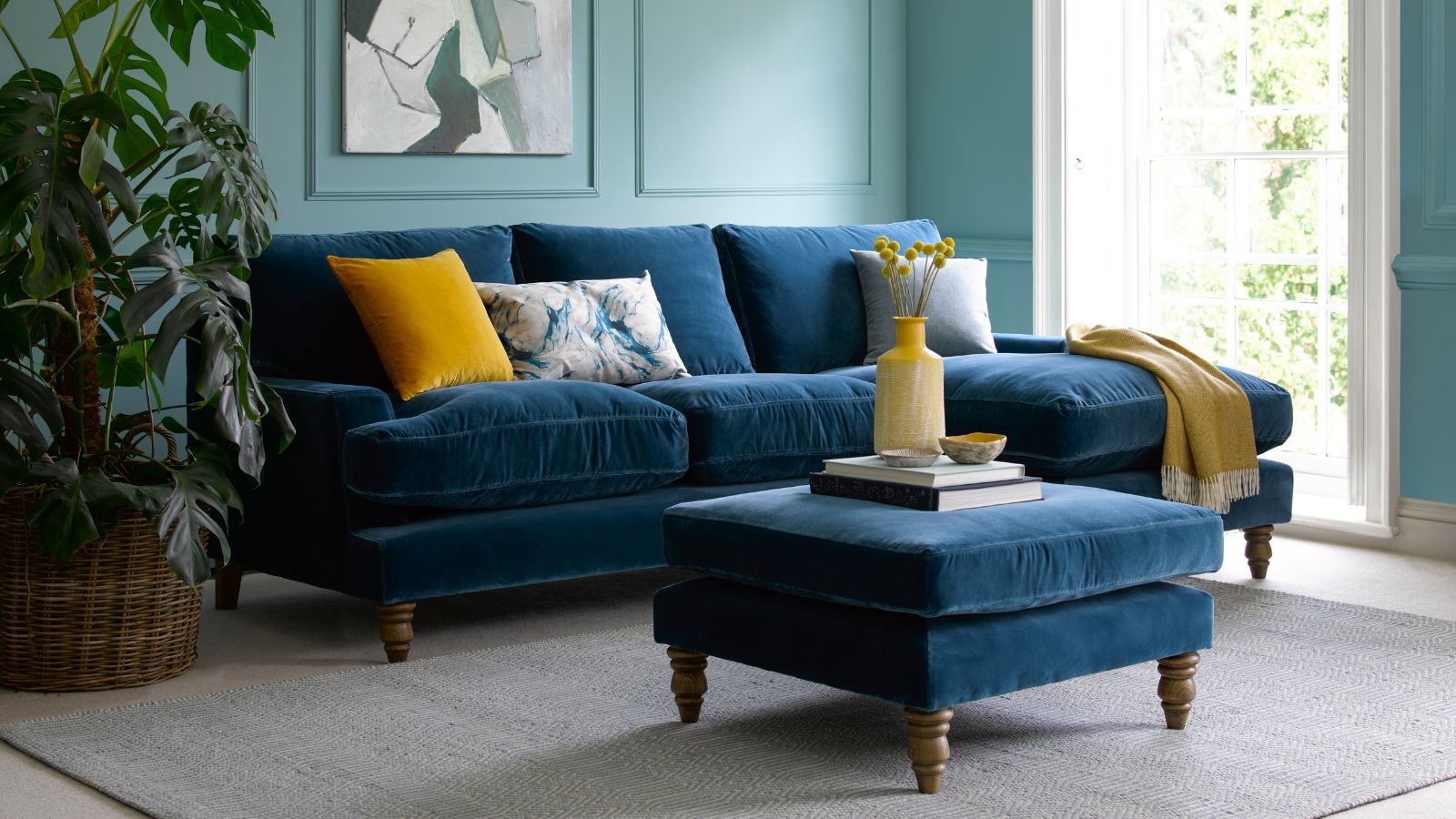
Over the years, I have gathered many really clever techniques from interior designers for styling a sofa so that it’s the focal point of a living space.
Some are simple and easy to switch up when you want to give your living room a fresh look quickly; others are more involved.
All are well worth the effort.
1. Complement your sofa with your colour scheme
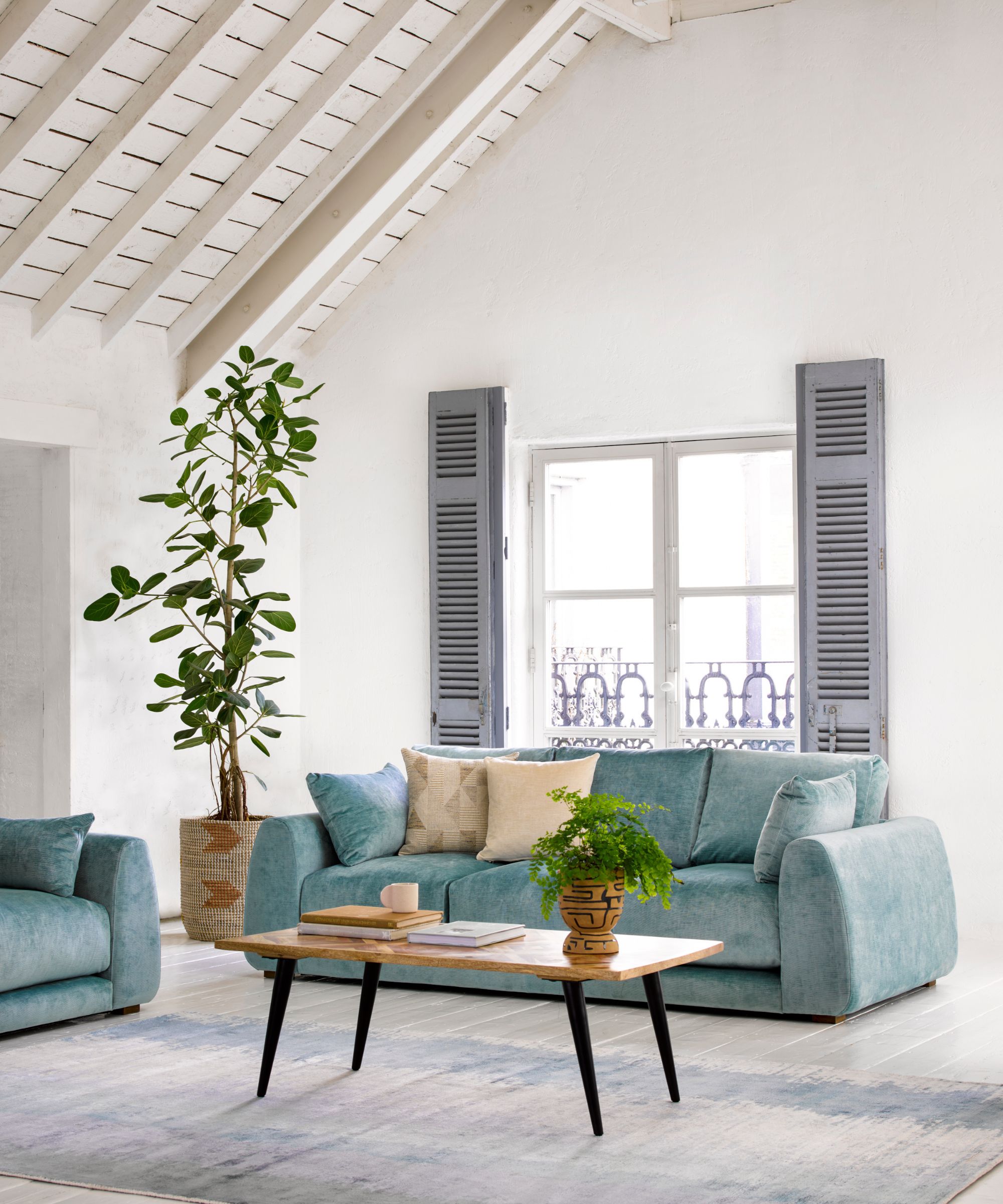
It’s likely that you will choose your sofa to complement your existing colour scheme, but whether your sofa is in a safe, goes-with-everything neutral or a bold new shade, it’s worthwhile taking note of not just the overt colour of the fabric, but the undertones, too.
Both can be highlighted in different ways and in different proportions around the room, whether in throw cushions on the sofa or in a vase on the mantelpiece opposite - and this will work to tie the sofa to the rest of your space for a cohesive look.
You can see how this works in the beautiful Carmel sofa from sofa.com (above). There’s both the deep blue and the more powdery tones in the fabric, which can be picked out in your colour scheme.
2. Create impact with the wall colour
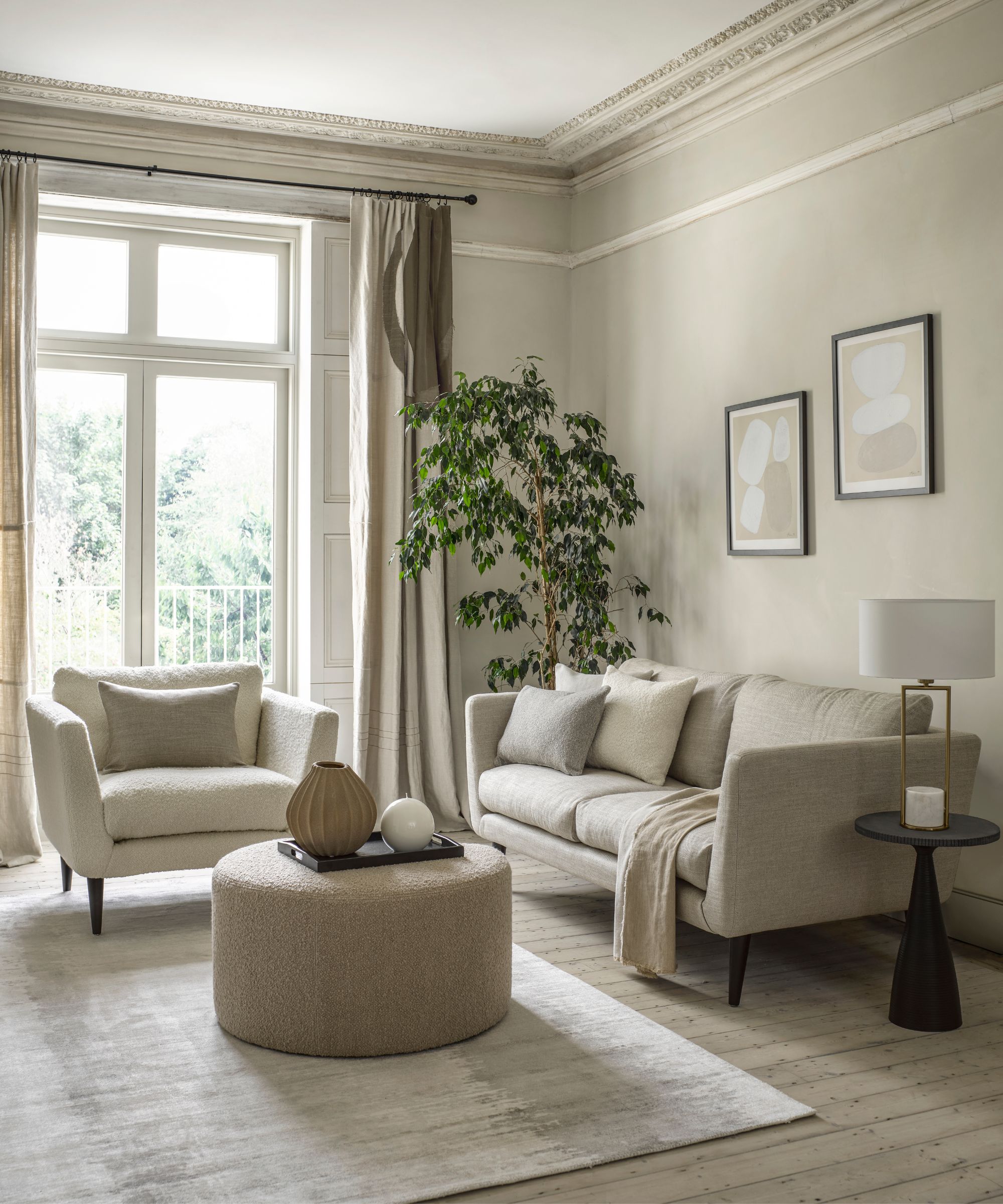
If you are looking to introduce a new colour to your living room, to create a more dramatic impact with your decorating, and to showcase your new sofa, the easiest way to do so is to redecorate the wall behind the sofa.
There are so many ways to do this, but the most obvious is with contrast: a neutral sofa - perhaps one in dark grey like mine – can really sing against a bolder, warmer background. Or, you can look at complementary schemes: for example, hanging a wallpaper with an accent colour in the motif that’s exactly the same colour as the sofa fabric. For maximum impact, colour drenching is a great tool: simply paint the wall behind the sofa the exact same shade as its fabric.
This is impactful with both colourful and neutral colours – you can see how rich it looks with the handsome Holly sofa in Cashew Baylee viscose linen, above. The effect is heightened by the adjustment of tone in both the Holly armchair in Oyster luxe boucle and Luna half moon footstool in Champagne luxe boucle shown alongside it.
3. Choose cushions and throws in accent shades
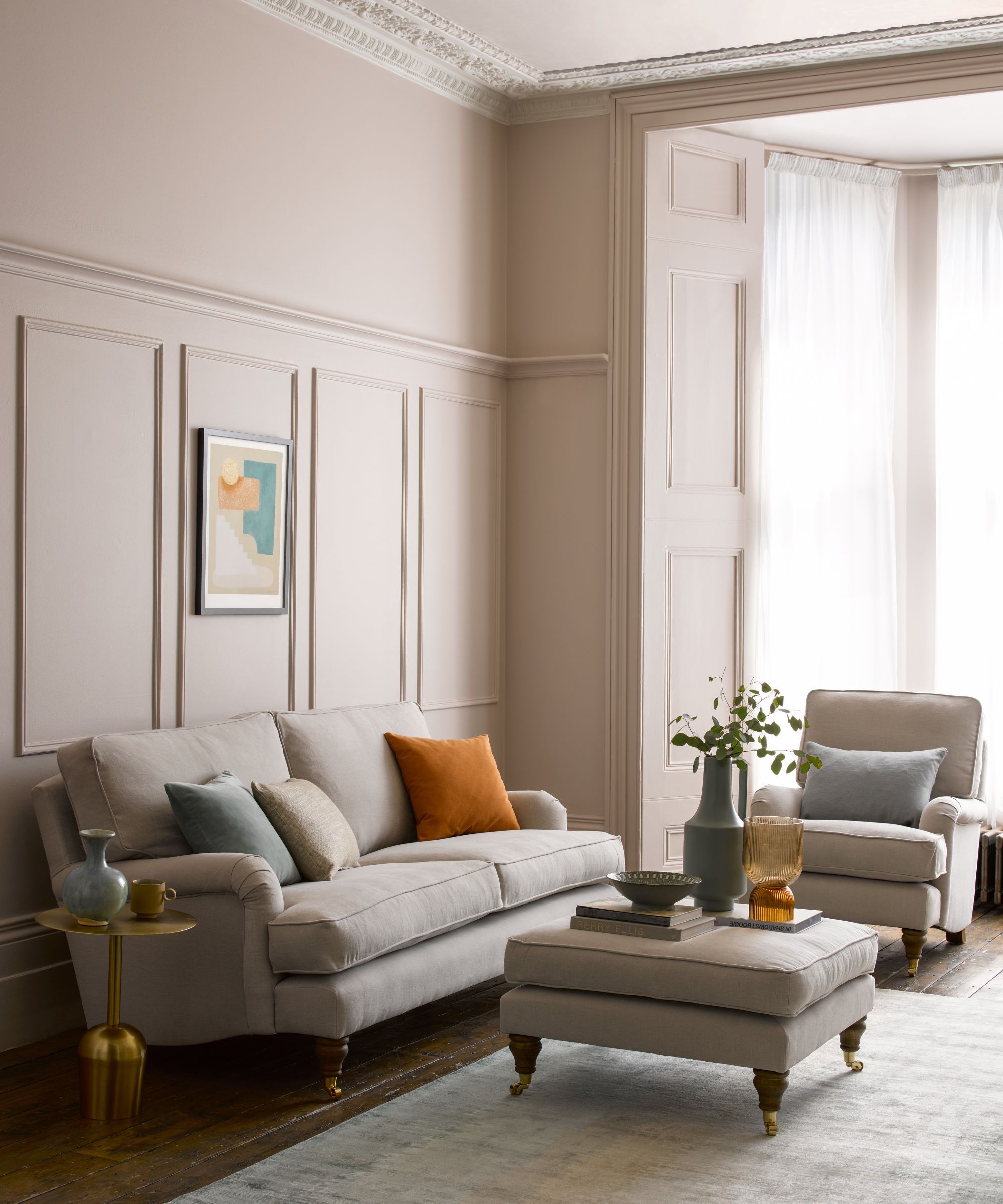
Most successful colour schemes rely on one main colour, then two to three accent colours, all in varying tones for subtle but effective layering. If you have yet to invest in cushions or throws, these present an opportunity to bring colour layering to your scheme.
For best effect, give the room’s primary accent colour more presence than the secondary or tertiary ones in your cushion choices, and introduce the sofa fabric colour into at least one of them, if only in a pattern detail. An added tip? Three to five cushions are better than two to four or six – odd numbers always look better.
Here, the Bluebell sofa in a lovely Taupe colourway has neutral and blue cushions in the same muted tones, while the orange cushion adds a contrasting boldness that still works perfectly with the upholstery.
4. Consider contrasting textures and patterns
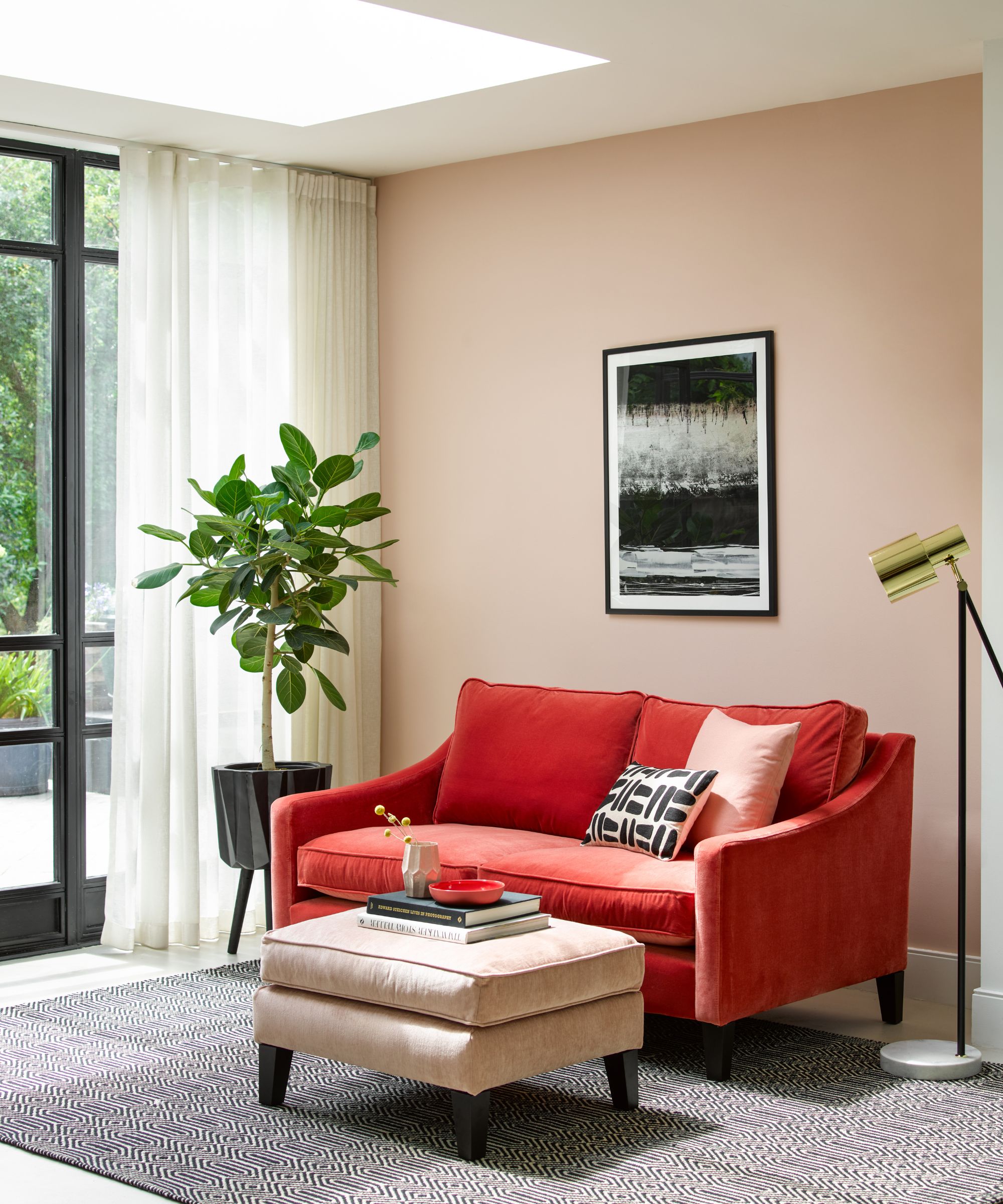
Just as cushions and throws can introduce accent colours, they can also bring new patterns and textures into the space. A combination of patterns is always more successful if it’s cleverly varied: look to include, in a trio of cushions for example, a large scale print, a small scale print, and a plain, perhaps with a contrasting piping.
You can further the effect with your throw, or look to introduce texture here, perhaps in the form of a chunky knit, a soft cashmere or a cosy velvet.
I have the three-seater version of this Iggy sofa from sofa.com one but in dark grey. However, I love love love the bravery of this deep orange/red upholstery fabric - plus the simple addition of a graphic cushion, which coordinates beautifully with the artwork.
5. Arrange cushions artfully
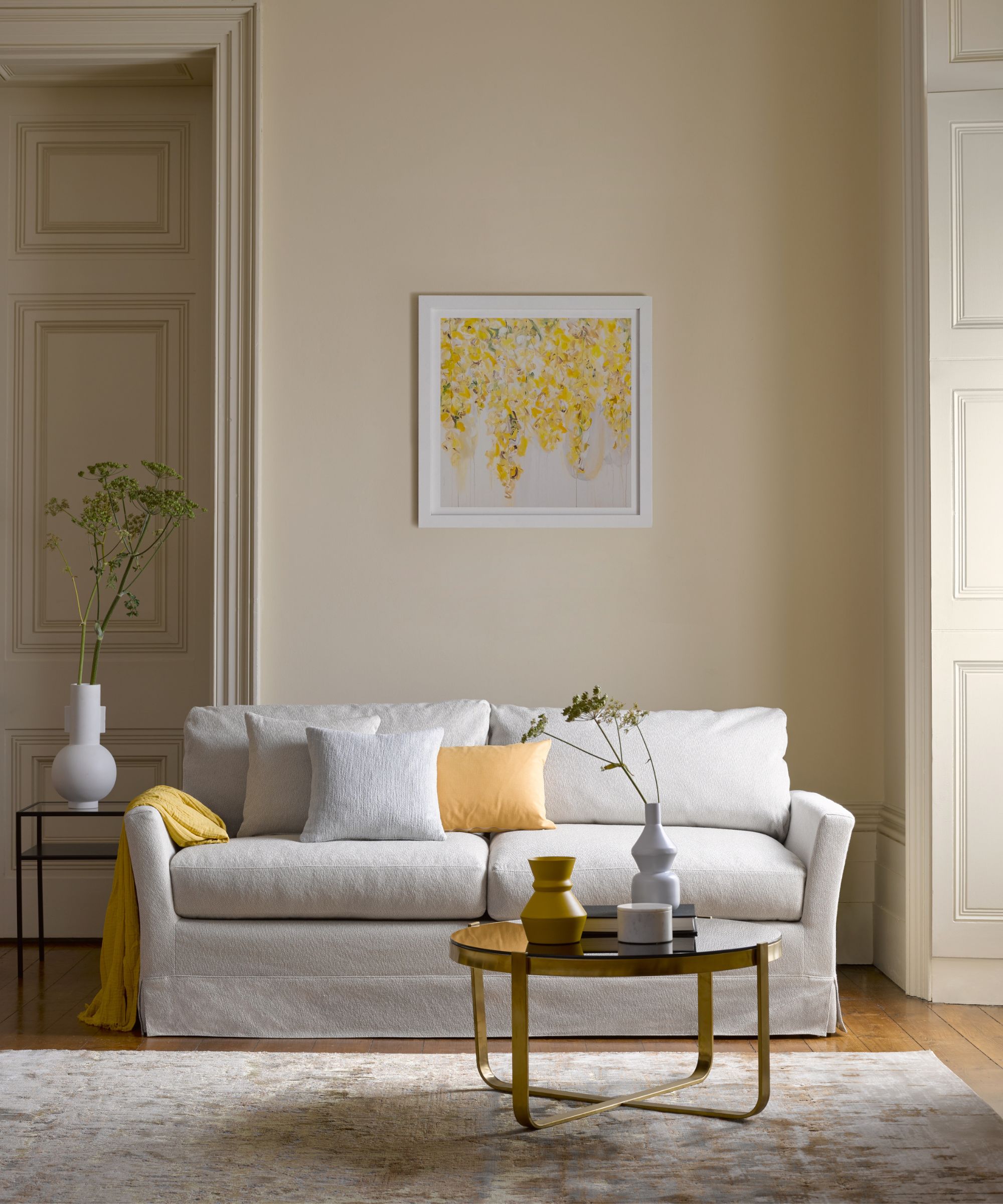
There are so many ways to arrange cushions, whether sat on their corners for a relaxed look to stacked and sat up on their flat edges for a formal feel. Choosing cushions of different sizes and shapes can also change how your sofa presents.
For example, a large cushion with a smaller rectangular one in front, repeated at either end of a two seater, or as a trio on a three seater, will give a balanced look that’s incredibly smart.
6. Drape throws purposefully
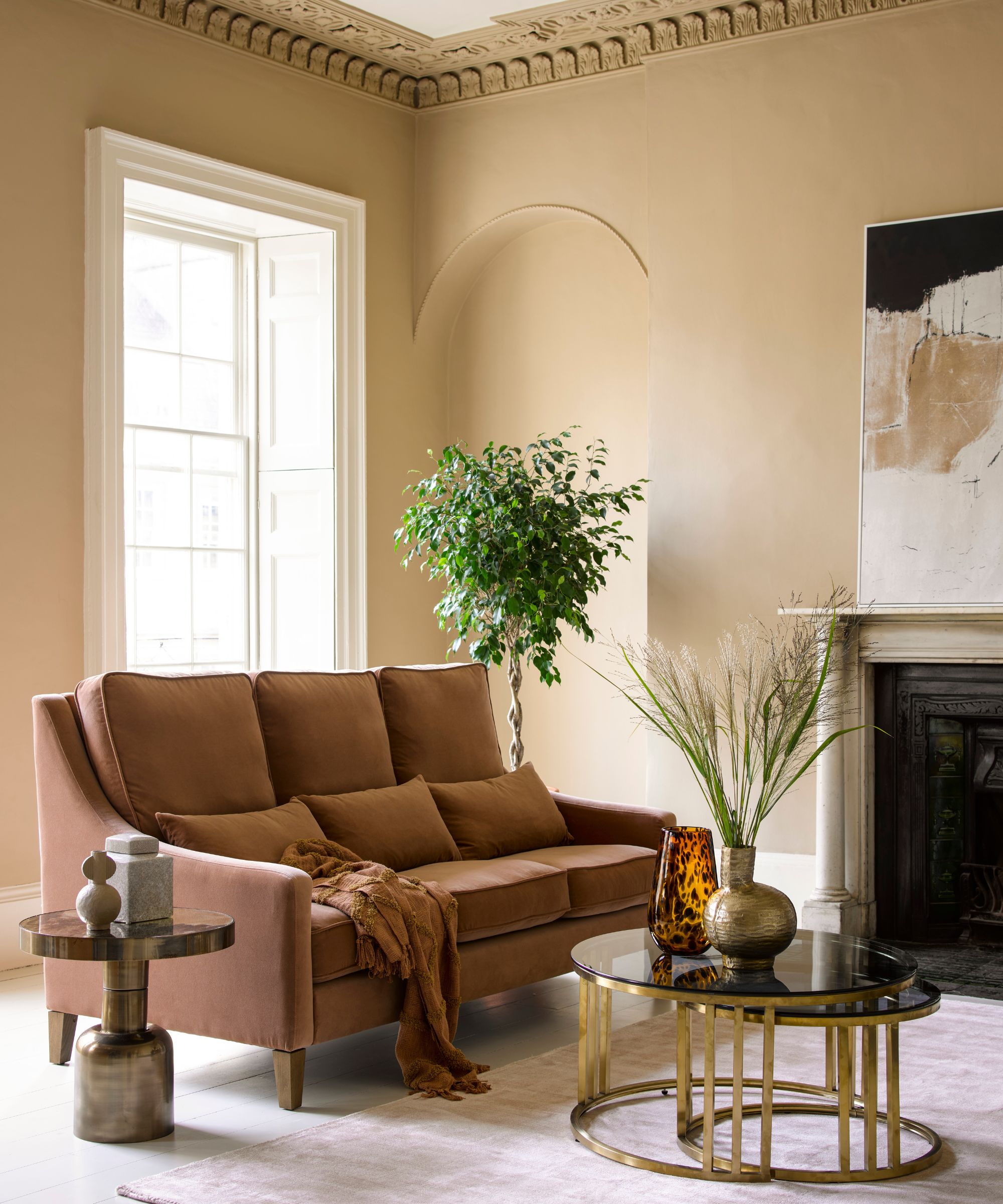
Throws aren’t just for comfort – you can drape them decoratively to add more colour, pattern and texture to your space – and to draw attention to your sofa.
I have a beautiful antique Turkish throw that drapes across the back of a sofa that sits across the width of an open-plan room. It can be admired from both sides of the room and has the same spice shades of the rug beneath the sofa, so there’s a lovely connection between the three elements. And on the arm of the same sofa, I have a beautiful, plain cashmere throw in the same colour as the velvet of the sofa. The pairing is subtle but feels luxurious.
Simpler still, a throw and cushions that are the perfect match for your sofa, as shown on this gorgeous deep toffee-coloured high-backed sofa, will give a boutique hotel look that’s pure luxury.
7. Ensure your sofa-rug ratio is correct
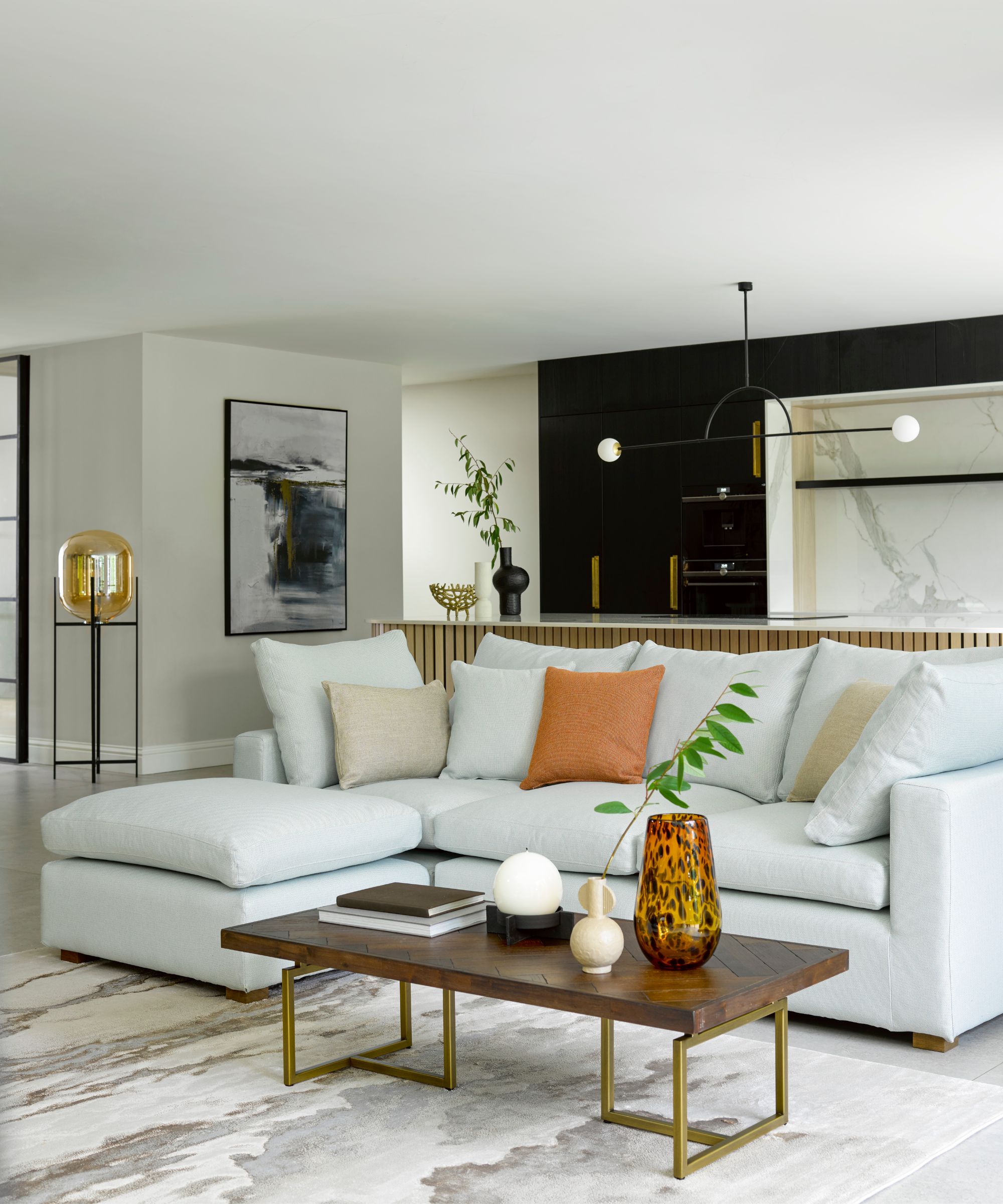
For me, area rugs are a must-have in a living room and they should be chosen with the sofa at the forefront of your mind. Ideally, a sofa’s front feet - and those of any armchairs - will sit on the rug. This gives both a sense of connection and - from a practical point of view - means the rug doesn’t move about. It’s important the rug is wide enough - at least a half foot wider at either end than the sofa.
This might not always work if you have a sectional, as shown with the Long Island Slim sofa above – however, simply ensuring the rug sits beneath the footstool will create the desired effect.
The rug’s colour scheme doesn’t need to be repeated in the sofa fabric, but if not, it should be introduced in the cushions or throw.
8. Frame the sofa with artwork
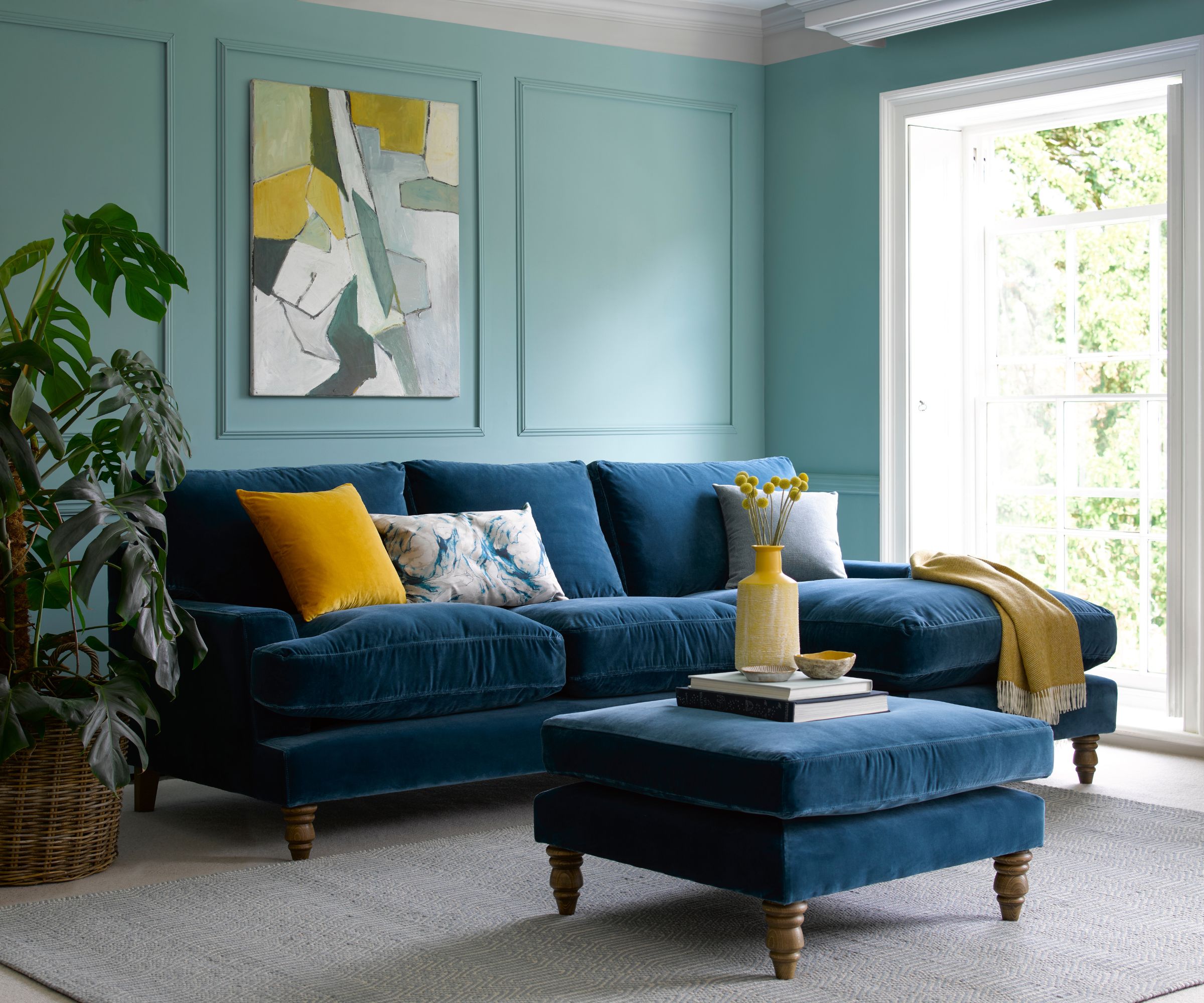
Just as a rug frames a sofa at floor level, artwork should be used above it to frame and draw attention. Whether you choose a single large picture, a row of smaller prints, or a gallery wall of artwork, it should ideally be half a foot shorter than the sofa’s width, though this will depend, to a degree, on the size and shape of the wall space - a very tall ceiling might call for artwork that’s narrower but taller, for example.
Either way, the artwork needs to be hung so that its bottom edge is nearer to the sofa than the top edge is to the ceiling. This will ensure the connection is between the artwork and sofa, not between the artwork and ceiling, which just doesn’t work. If the picture you love to hang is much smaller than the sofa, you can still achieve this connection with clever picture framing, or wall panels that finish just above the back of the sofa.
9. Maximise your sofa’s presence with side tables
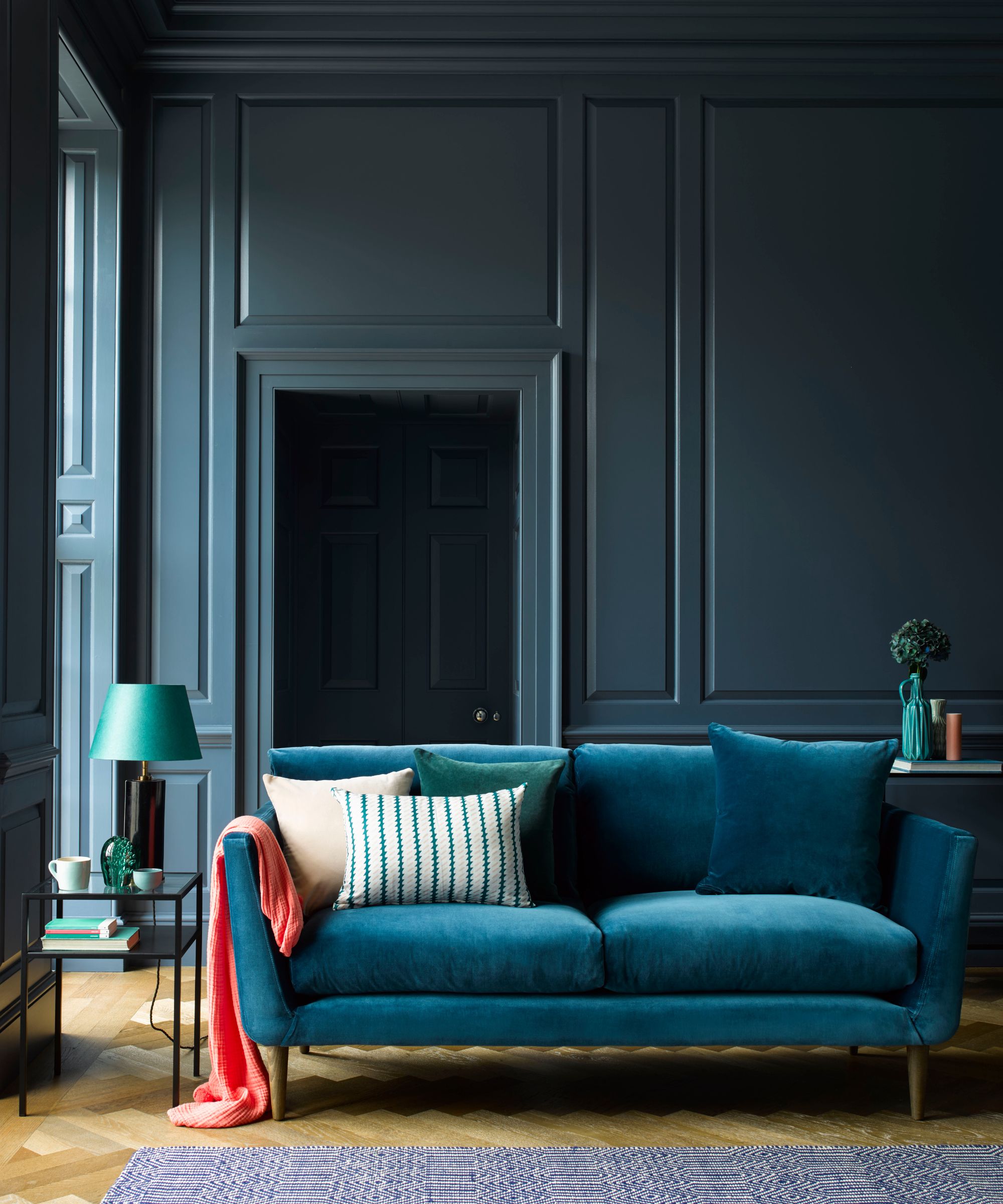
Just as a bed is always accompanied by bedside tables, a sofa should always be bookended by side tables. Not only are they a practical addition, they also allow for low level lighting that throws flattering hues over your sofa at night, inviting you to sit down - as if you needed the enticement.
If the side tables will be used for placing drinks on to, the surfaces need to be around the same level as the height of your sofa’s arms. However, choose table lamps carefully – you do not want them at a height or with a shade design that means exposed bulb light will shine into your eyes when you’re sitting down.
When choosing side tables, consider one that’s a contrasting shape to your sofa’s silhouette. For example, if you have a curvaceous sofa, an angular pair of tables will add pleasing contrast – and vice versa.
10. Extend your sofa into the room’s centre with a footstool - or coffee table
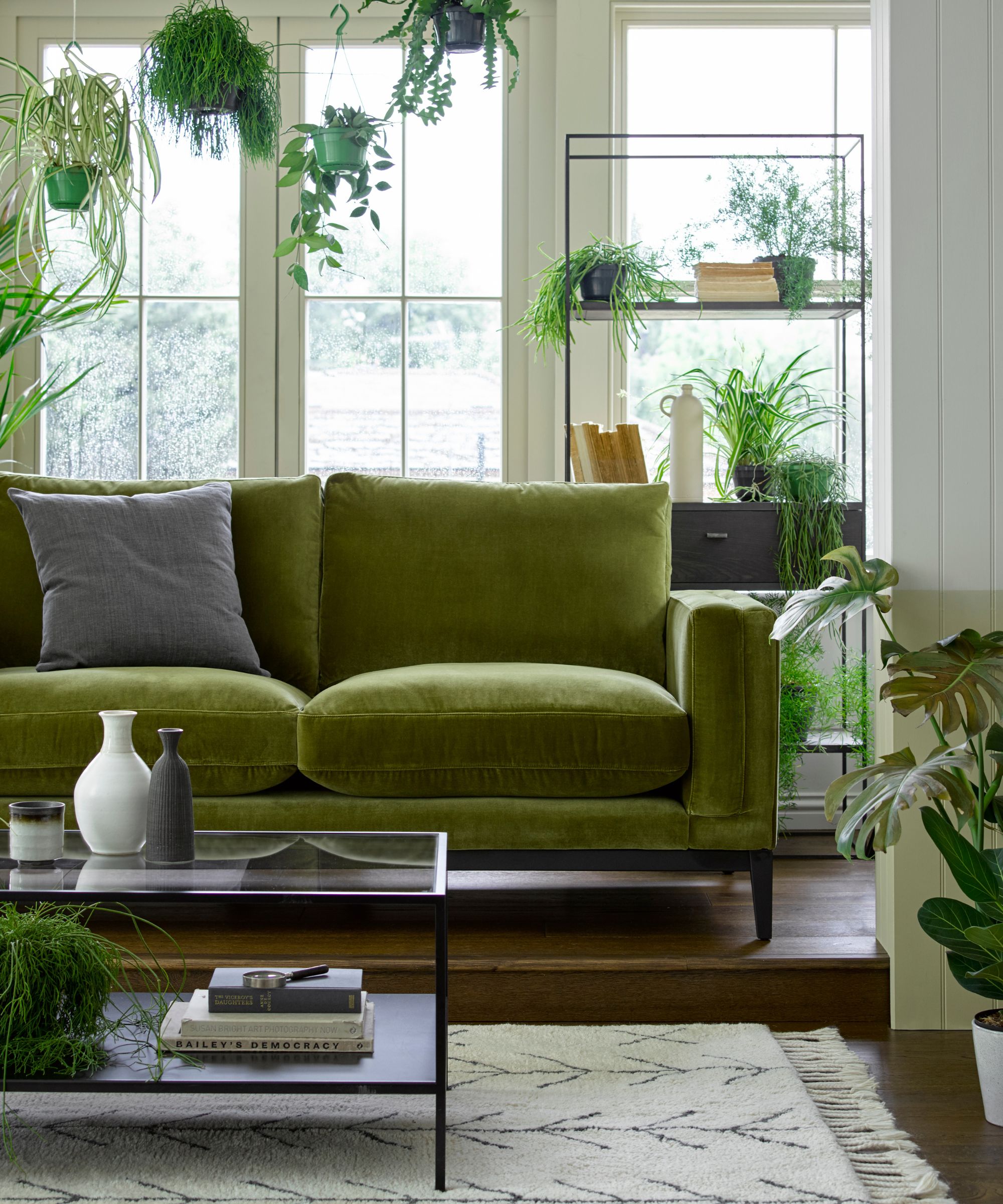
Placing a footstool or coffee table in front of your sofa is another way to draw attention to it. Either can be used to introduce more texture, complementary colours and materials to the room. However, be careful not to choose materials that clash.
For example, a footstool’s upholstery might contrast with your sofa’s for added interest but if this is the case, its show feet should complement those of the sofa. Similarly, the wood of a coffee table would ideally complement any wood elements of the sofa.
The surfaces of both can be used to further highlight the colour of the sofa or the accent colours in the cushions – with a complementary throw draped over a footstool, for example, or a selection of pretty trinkets in just the right colours on a coffee table.
To find your dream sofa, go to sofa.com to see the full range of styles, sizes and colours available, as well as their extensive range of home accessories to complete your look.
Design expertise in your inbox – from inspiring decorating ideas and beautiful celebrity homes to practical gardening advice and shopping round-ups.
As the UK’s first-ever home interest magazine, Homes & Gardens has been shaping British style for 100 years. Our core pillars are inspirational interiors, stylish decorating, beautiful gardens and fascinating stories. With the values of timeless style and considered elegance at our heart, we show an affection for heritage whilst also championing the future, from emerging designers to latest trends.
The Homes & Gardens website brings all our beautiful content online, with a focus on stunning room ideas, expert advice from interior designers, architects and design professionals, and more practical expertise, too, on caring for and improving your home. Our website is updated and added to daily and we're delighted to welcome more than 6 million readers monthly. Of course, we've assembled a cracking team of experts in their fields to deliver all this stunning inspiration to you, and we'd love to introduce them. Their contact details are below, too.
-
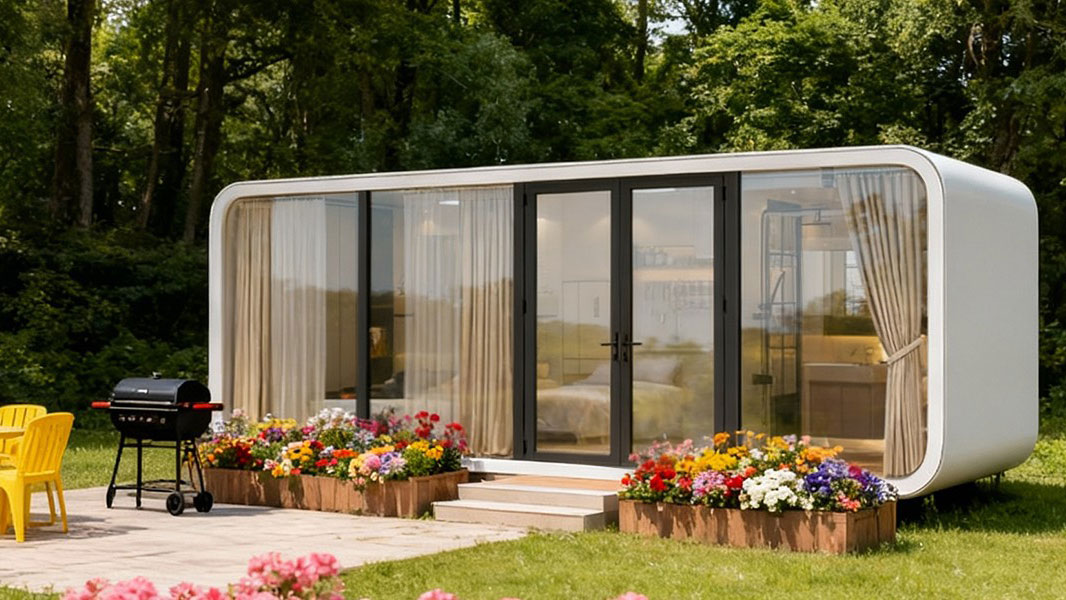 Amazon Is Selling a Customizable Tiny Home, and It's $10,000 Cheaper Than Normal – It's Surprisingly Modern, Chic, and Under $30,000
Amazon Is Selling a Customizable Tiny Home, and It's $10,000 Cheaper Than Normal – It's Surprisingly Modern, Chic, and Under $30,000Tiny homes are more than a trend. They’re part of a bigger conversation about how we live – and you can bring one home this Black Friday, with $10,000 off this prefab tiny cabin, thanks to an on-page coupon
-
 'Perfect for Hummingbird Enthusiasts’ – This $100 Feeder Camera in Walmart’s Cyber Monday Sale Is the Best I’ve Seen Yet, but the Deal is Only On Tonight
'Perfect for Hummingbird Enthusiasts’ – This $100 Feeder Camera in Walmart’s Cyber Monday Sale Is the Best I’ve Seen Yet, but the Deal is Only On TonightIt's the ideal time to install a hummingbird feeder camera, as these charming birds move south for winter
-
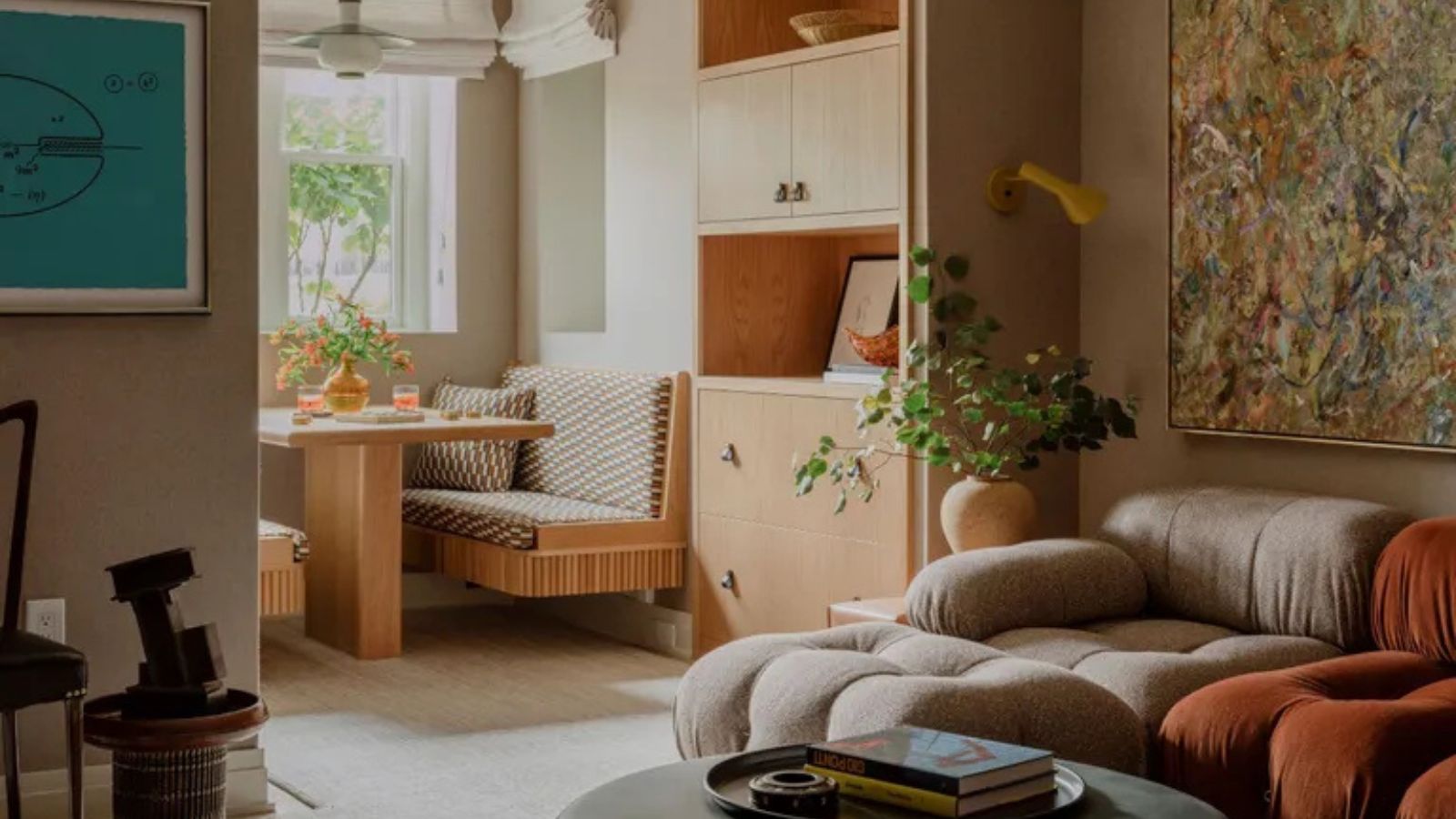 5 things interior designers say you should do to your home in January
5 things interior designers say you should do to your home in JanuaryDesigners have their own ways to beat the January blues, and these 5 decor tweaks will help you get through the month
-
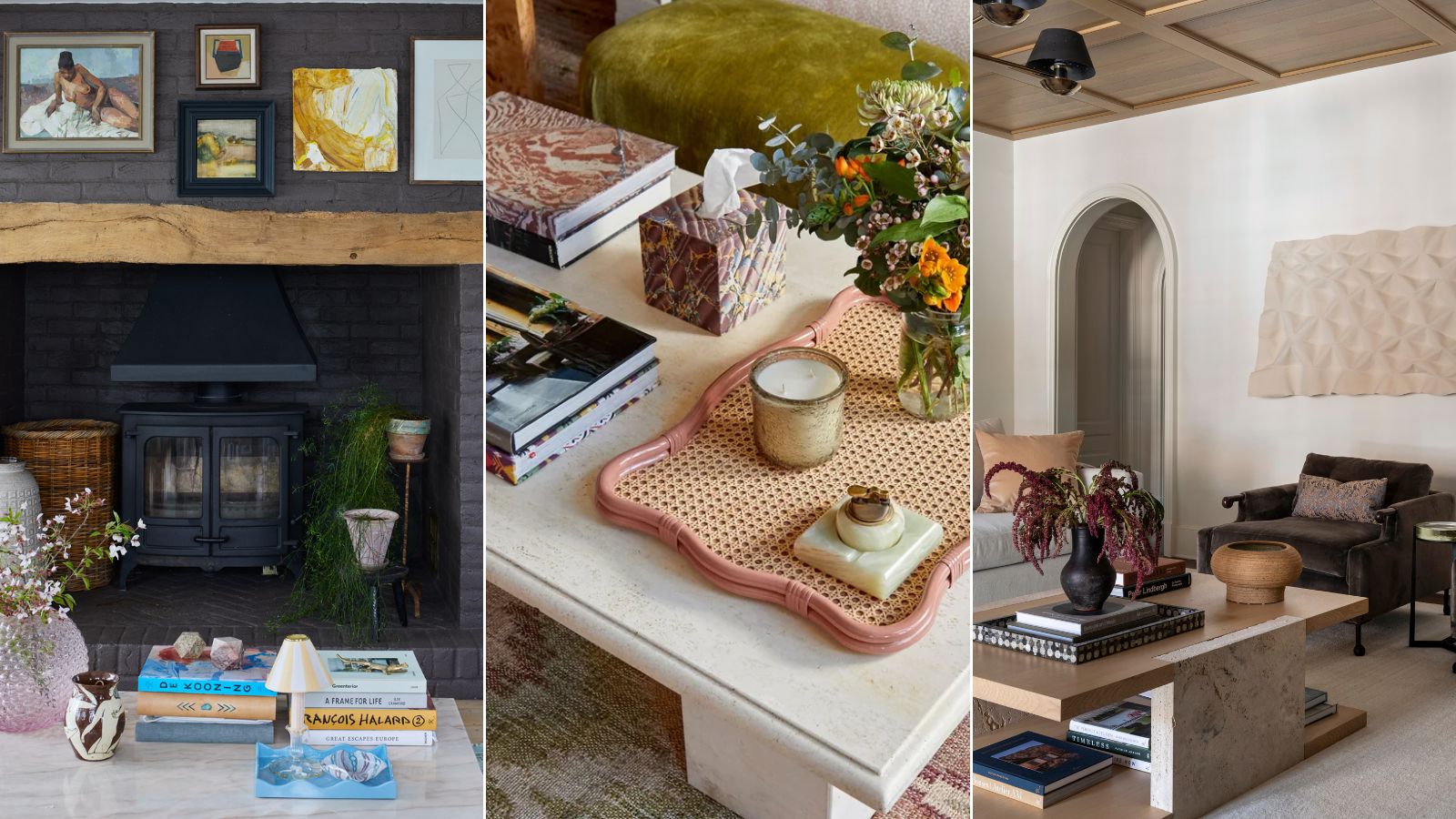 How to make your coffee table look more expensive – 5 tips from the professionals
How to make your coffee table look more expensive – 5 tips from the professionalsYour step-by-step guide to making your coffee table look effortlessly polished
-
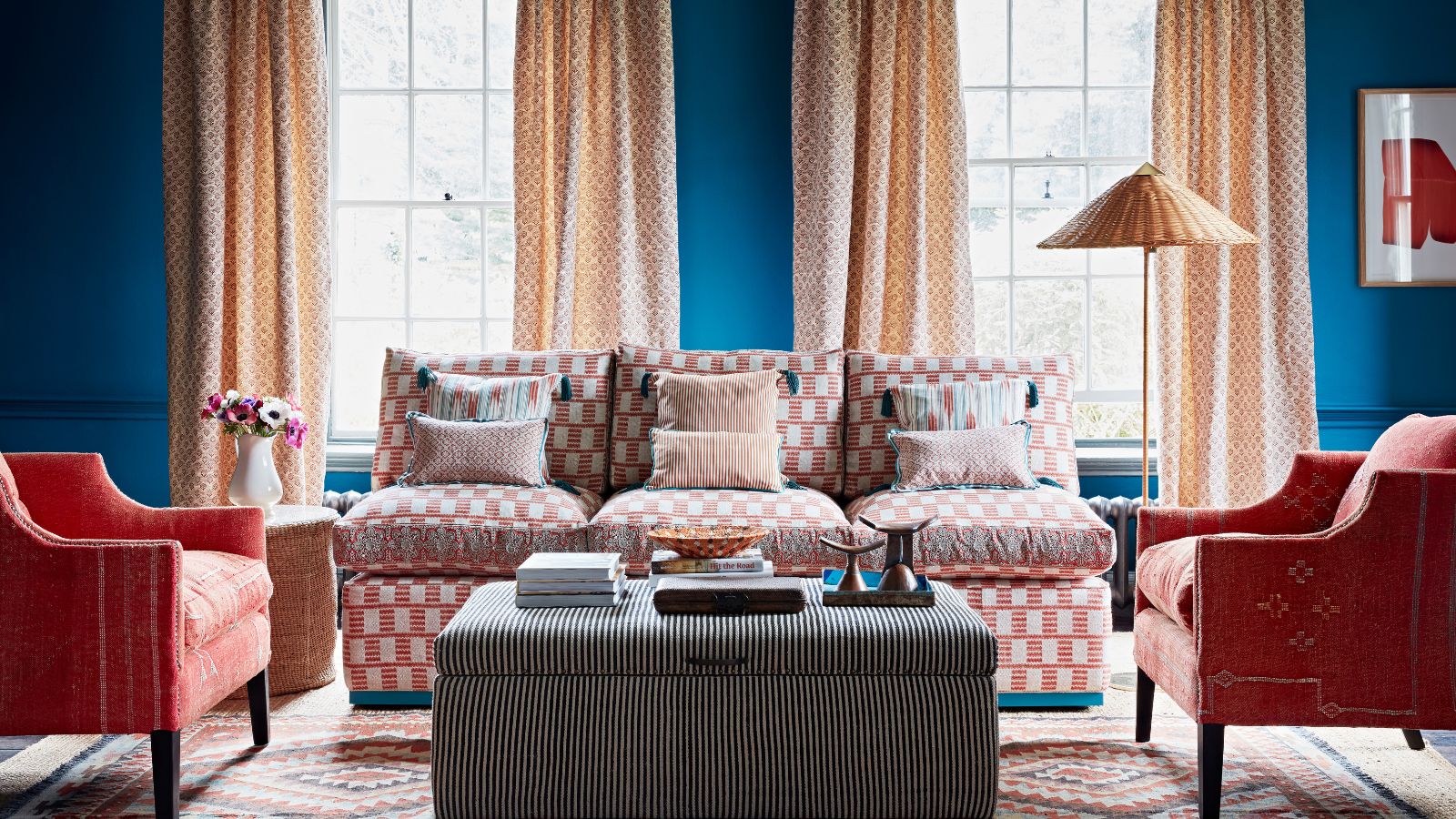 Couch dos and don'ts – 10 tips for choosing the right piece for your space
Couch dos and don'ts – 10 tips for choosing the right piece for your spaceA couch is a big commitment, and finding the ideal one for your home and lifestyle is a serious matter. Experts tell us what to keep in mind
-
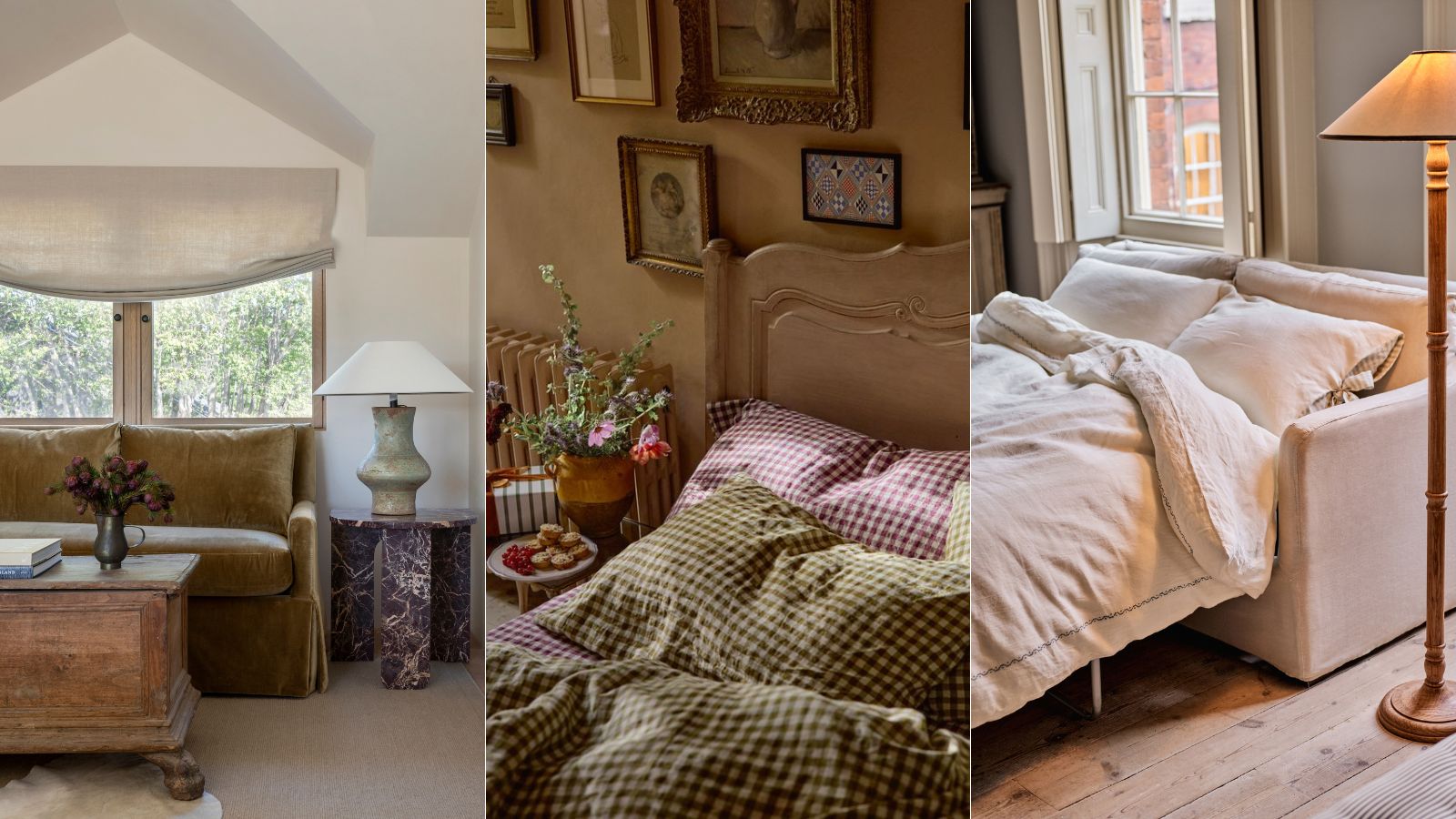 How to style a sleeper sofa to make it look more expensive and luxurious for your overnight guests
How to style a sleeper sofa to make it look more expensive and luxurious for your overnight guestsCreate a guest space they'll never want to leave with these tips for styling a sleeper sofa over the holidays
-
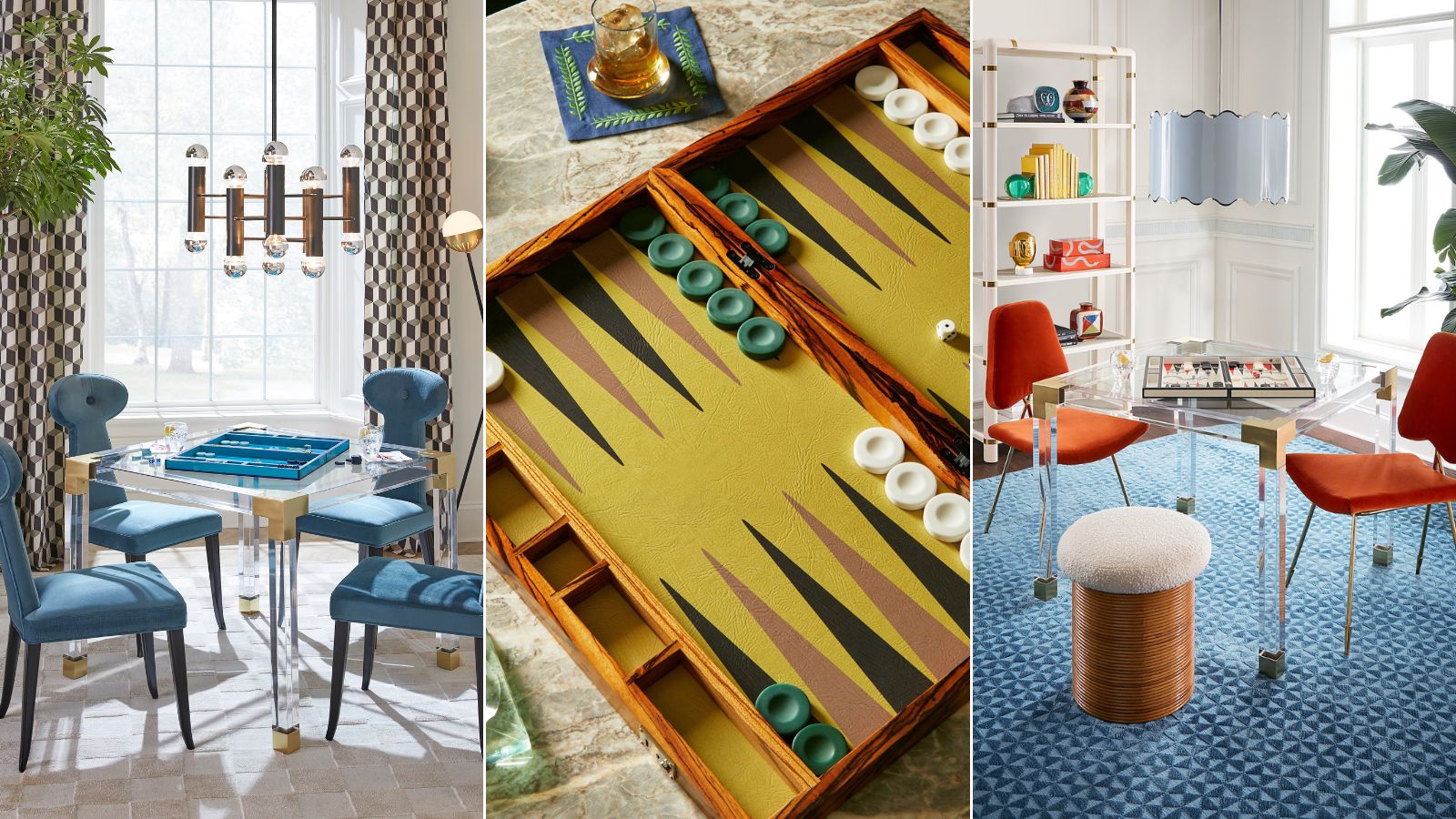 All the stylish people I know are using board games to elevate their coffee tables – it's an unexpected way to add some luxury to your living room
All the stylish people I know are using board games to elevate their coffee tables – it's an unexpected way to add some luxury to your living roomDesigners and retail experts share their thoughts on the revival of the traditional game set and how to style them in the home
-
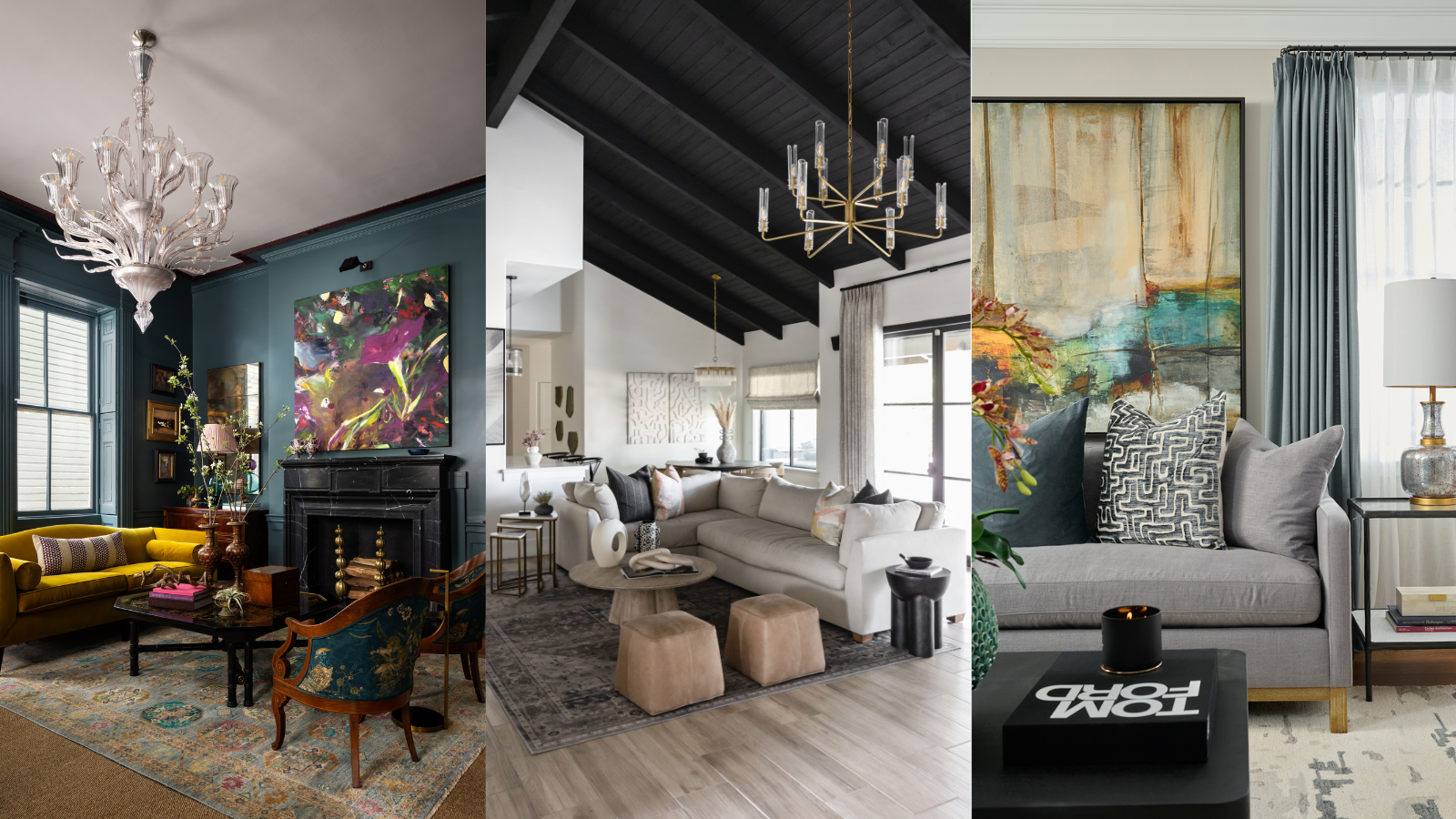 How much of your couch should sit on the rug? 5 key points to consider according to designers
How much of your couch should sit on the rug? 5 key points to consider according to designersWondering how much your couch should sit on a rug, if at all? Designers share the ultimate guide to help you get it right
-
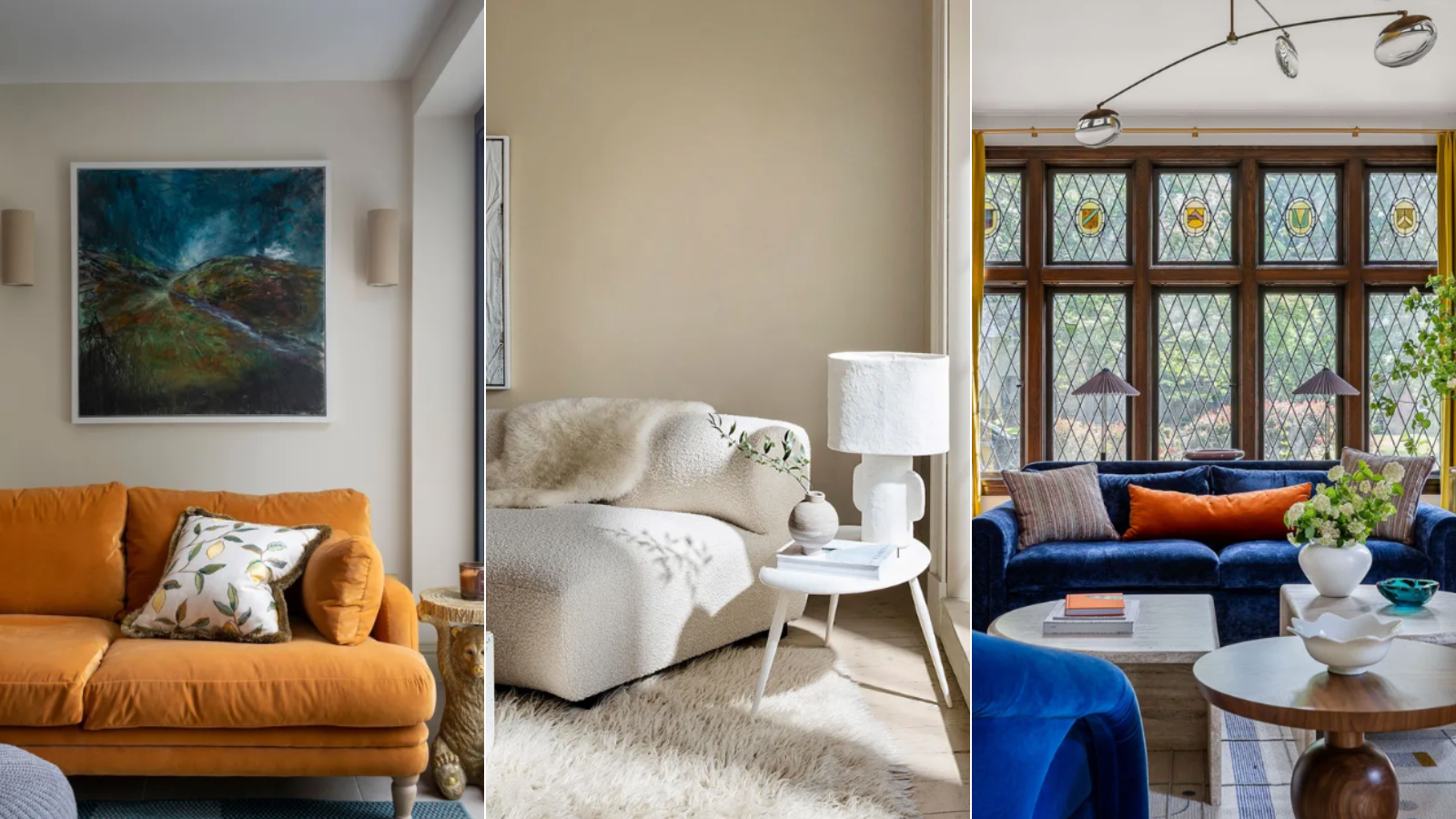 What's the difference between a couch and a sofa? Experts explain how to decide which is right for your space
What's the difference between a couch and a sofa? Experts explain how to decide which is right for your spaceDid you know there is actually a difference between a couch and a sofa? We asked the experts why they really aren’t two different words for one piece of furniture
-
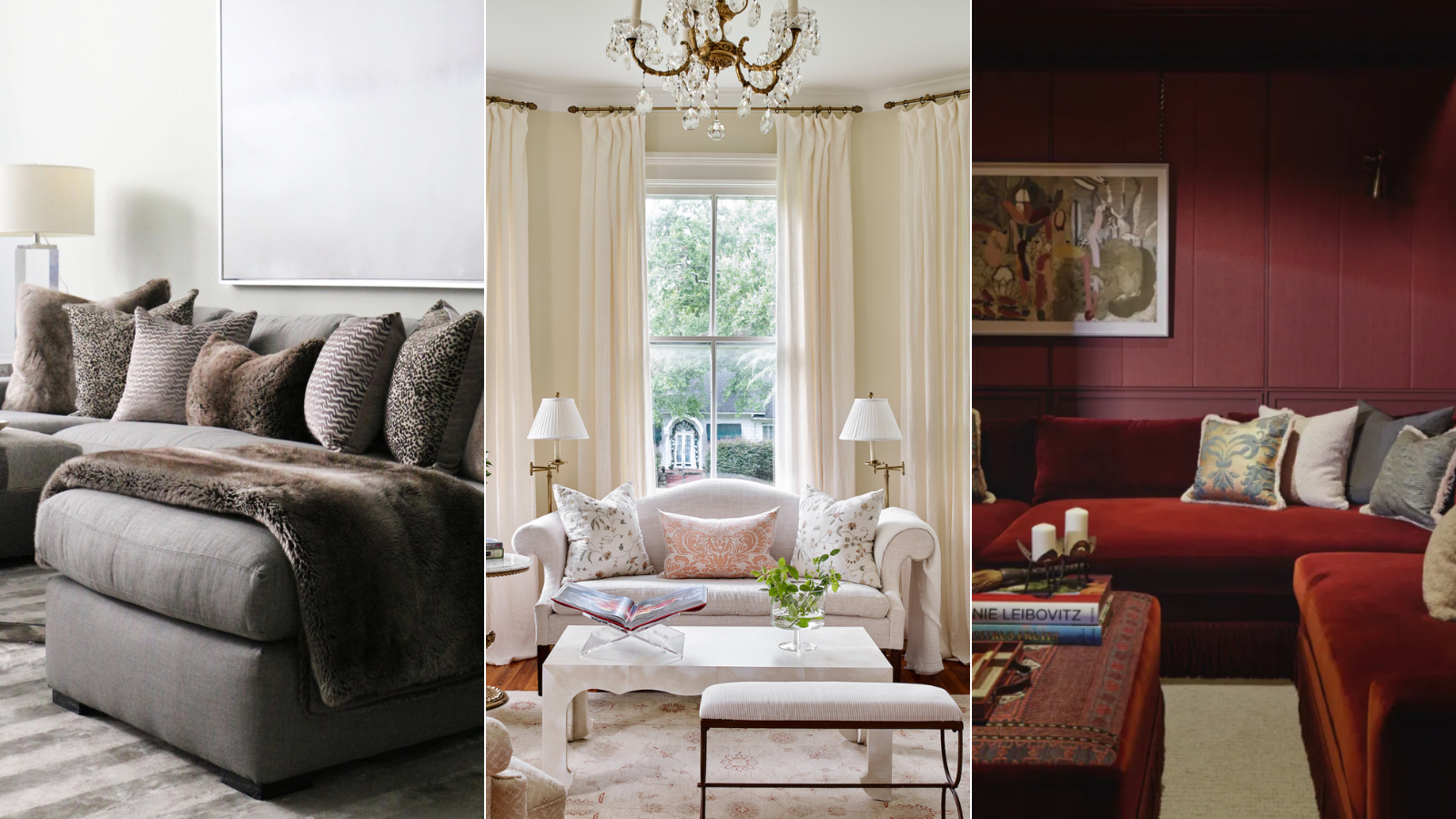 How to make your throw pillows look more expensive – pro-recommended techniques that work every time
How to make your throw pillows look more expensive – pro-recommended techniques that work every timeBoost the style of your seating with interior designer expertise on making throw pillows look better

